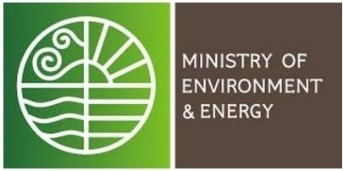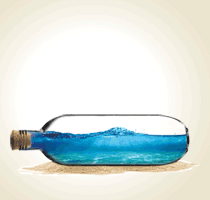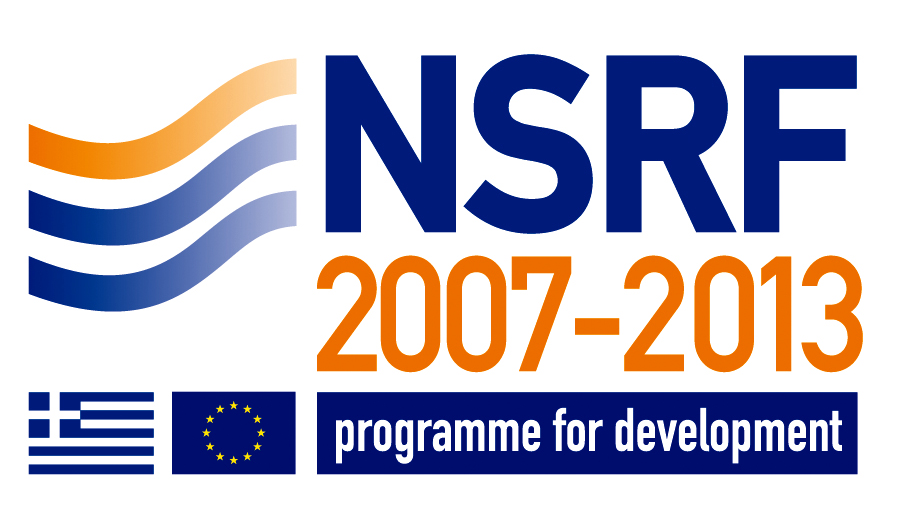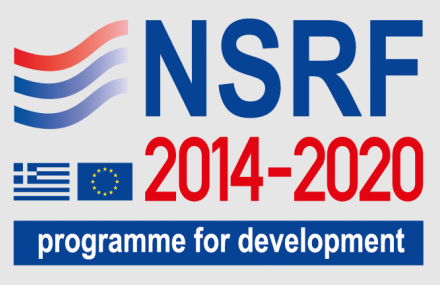FAQ
What was the method used for grouping the monitoring sites?
The sampling locations correspond to beaches with a significant number of bathers and/or beaches of particular interest (in terms of amenity value, touristic development, cultural aspects, environmental sensitivity) or beaches subjected to significant environmental pressures.
The grouping of existing sampling points in order to determine the selected beaches was performed following the principles outlined in Directive 2006/7/EC, such as:
Adjacent waters:
Sampling points belonging to adjacent waters were grouped together. Sampling points belonging to different bays correspond to different beaches.River basin:
The grouped sampling points must belong to the same river basin, based on first class mountain river basins. This principle ensures uniformity in pressure on coasts based on land use in the wider area.Administrative subordination:
The grouped sampling points belong to the same Municipality under the new administrative division of the country (Law 3852/2010 - Kallikrates programme).Classification of sampling points:
The grouped sampling points have similar qualitative characteristics , as reflected by the classification of monitoring points of 2010, which was conducted in accordance with Directive 2006/7/EC and is based on measurements over the last 4 years.
In parallel, the polygons of the beaches limits have been established. For each beach a vectorial polygon file has been established that includes the overland and maritime area where the majority of bathers is gathered. The boundary of the polygon in the overland zone covers the coast shown from the cartographic background (bathers service area, excluding parking areas and service areas for the public), while in the maritime area corresponds to 5 meter isobath.
Is it possible to add new beaches in the Monitoring Programme for bathing waters?
To add a beach in the monitoring Programme and to obtain a beach profile, stakeholders of any beach are able submit an application, through the competent Mayor, accompanied by: relevant documentation that the coast attracts a large number of bathers or is of other special interest (cultural, developmental, etc.), a map depicting it or an aerial photograph (googleearth), a proposed representative monitoring point on that coast, length and distance of the proposed point from the closest points already included in the "Programme".
How often is the profile reviewed?
The bathing water profile shall be reviewed to control various parameters defined in Annex III of Directive 2006/7/EC or after the construction of any structural works or alterations due to infrastructure projects in areas adjacent to the bathing water, as a result of which the quality and therefore the classification of bathing water could be affected.
The frequency and scope of the review are set depending on the nature and severity of pollution. However, the review covers at least the provisions of the Directive and shall be conducted at least at intervals specified in the following schedule:
| Bathing water classification | "Good quality" | "Sufficient quality" | "Poor quality" |
| Conducting a review in accordance with Directive 2006/7/EC every | four years | three years | two years |
| 1st review the latest by | 2015 | 2014 | 2013 |
In case of bathing waters previously classified as "of excellent quality", the bathing water profile will be reviewed and possibly updated only if the classification changes to "good quality", "sufficient quality" or "poor quality".
What is the duration of the bathing season?
The bathing season in Greece usually lasts 5 months, from June to October, with the highest concentration of swimmers observed during July and August.
The duration of the bathing season is determined each year by decision of the Minister of Environment and Energy, upon the recommendation of the General Secretariat for Natural Environment and Water and always prior to starting thereof.
What is the sampling frequency?
At each sampling point, a sample is taken right before the start of the bathing season.
Sampling dates are distributed throughout the bathing season, one sampling/analysis is conducted monthly and the interval between two consecutive samplings does not exceed thirty (30) days. This frequency must be strictly observed, because the quality of bathing waters is assessed further to a statistical processing of analysis results, which requires a sufficient number of samples, as determined on the relevant Directive 2006/7/EC.
What are the monitored parameters?
The microbiological parameters monitored are:
The Visually Monitored Parameters are:
Enterococci - Intestinal enterococci (cfu/100 ml) and
Coliform bacteria - Escherichia coli (cfu/100 ml)
The reference methods for the analysis of enterococci are ISO 7899-1 or ISO 7899-2 and for the analysis of coliform bacteria ISO 9308-3 or ISO 9308-1. However, other than the above mentioned reference methods may be applied as long as they are certified by ESYD (Hellenic Accreditation System S.A.), and provide results equivalent to those of reference methods.
Tarry residues, glass, plastics, rubber or any other waste.
The purpose of visual monitoring is to control whether contaminants are present, so that when such pollution is detected, to take adequate measures including public awareness.
How can I help? How is it possible to be involved?
You can help and contribute with your observations towards improving and updating bathing water profiles.
Do you find the information in the register helpful?
Is the specific Profile you are interested in realistic in your opinion ?
Is there any additional information you would like to include?
Please send us your comments or share your opinion by clicking on Log in or Register at the end of the coast profile you are interested in.
How do I get informed about changes in the Register?
Through this website the public gets directly informed on all following information:
- declassification cases and therefore bathing waters being deleted from the relevant table. The public gets also informed through a notice declaring the relevant reasons, which is placed in areas in the immediate vicinity of the water in question throughout the bathing season of the year during which the water has been declassified for the following year as well. The same notice informs the public of the nearest bathing waters as well.
- description of newly included bathing waters and classification thereof as well as Profile thereof
- monitoring schedule
- history of incidents, requiring management measures, especially targeted preventive management measures for conservation and protection of bathing water to prevent degradation of quality or to improve their quality, and measures taken during the bathing season to prevent the exposure of bathers to pollution/contamination and to reduce or eliminate the risk of pollution/contamination.
- update of profiles that need to be reviewed in accordance with the requirements of Directive 2006/7/EC.
Furthermore, the General Secretariat for Natural Environment and Water issues relevant press releases which arrear on the website of the Ministry and encourage active participation of all stakeholders in the process of public awareness and participation of citizens in matters relating to bathing water quality.
The Bathing Water Profiles, prepared by the General Secretariat for the Natural Environment and Water, represent the official designation of bathing waters at national level. The Profiles, the results of the Programme for the Monitoring of Bathing Waters and the quality evaluation of bathing water by the Ministry of Environment and Energy are published annually and sent to the European Union, as the official position of Greece.
The "BLUE FLAGS" Programme is an initiative of the international organization Fee (Foundation for Environmental Education), represented in Greece by the Hellenic Society for the Protection of Nature (HSPN). The Hellenic Society for the Protection of Nature cooperates with the Ministry of Environment and Energy and in particular makes use of officially published results of the monitoring Programme of General Secretariat for Natural Environment and Water for the participation of coastal management stakeholders in the international volunteer program "BLUE FLAGS".
How does the classification in the four categories take place?
The assessment of bathing water quality takes place in relation to each bathing water site after the end of each bathing season, based on all qualitative data on bathing water quality compiled in relation to that bathing season and the three preceding bathing seasons and follows a proper statistical analysis(described in Annex II of Directive 2006/7).
Bathing waters are evaluated and classified into four categories as follows:
1. Poor quality
Bathing waters are classified as "of poor quality", if, in all qualitative data on bathing water for the last assessment period1, the percentile values2 or microbiological counts are worse3 than those of "sufficient quality" in column D of Annex I, namely:
For inland water bodies:
| Α | B | C | D | E |
| Parameter | Excellent quality | Good Quality | Sufficient Quality | Methods of Behaviour Analysis |
| Enterococci (cfu/100 ml) | 200(*) | 400(*) | 330(**) | ISO 7899-1 ή ISO 7899-2 |
| Coliform bacteria (cfu/100 ml) | 500(*) | 1000(*) | 900(**) | ISO 9308-3 ή ISO 9308-1 |
(*) Based on an assessment under the 95th percentile
(**) Based on an assessment under the 90th percentile.
For coastal waters and transitional waters
| Α | B | C | D | E |
| Parameter | Excellent quality | Good Quality | Sufficient Quality | Methods of Behaviour Analysis |
| Enterococci (cfu/100 ml) | 100(*) | 200(*) | 185(**) | ISO 7899-1 ή ISO 7899-2 |
| Coliform bacteria (cfu/100 ml) | 250(*) | 500(*) | 500(**) | ISO 9308-3 ή ISO 9308-1 |
(*) Based on an assessment under the 95th percentile.
(**) Based on an assessment under the 90th percentile.
2. Sufficient Quality
Bathing waters are classified as waters "of sufficient quality":
- if, in all qualitative data on bathing water for the last assessment period, the percentile values for microbiological counts are equal or better4 than those of "good quality" in column C of Annex I, and
- if the bathing water is subject to short-term pollution incidents, on condition that:
i) adequate management measures are taken, including surveillance, early warning and monitoring systems, aiming to prevent the exposure of bathers through warnings or, where necessary, prohibition of bathing;
ii) adequate management measures are taken to prevent, reduce or eliminate the causes of pollution;
iii) the number of samples disregarded in accordance with article 3, paragraph 6, due to short-term pollution during the last assessment period, does not exceed 15% of the total number of samples provided in the monitoring schedule of that period, or one sample per bathing season, depending which is the largest.
3. Good Quality
Bathing waters are classified as waters "of good quality":
- if, in all qualitative data on bathing water for the last assessment period, the percentile values for microbiological counts are equal or better5 than those of "sufficient quality" in column D of Annex I, and
- if the bathing water is subject to short-term pollution incidents, on condition that:
i) adequate management measures are taken, including surveillance, early warning and monitoring systems, aiming to prevent the exposure of bathers through warnings or, where necessary, prohibition of bathing;
ii) adequate management measures are taken to prevent, reduce or eliminate the causes of pollution;
iii) the number of samples disregarded in accordance with article 3, paragraph 6, due to short-term pollution during the last assessment period, does not exceed 15% of the total number of samples provided in the monitoring schedule of that period, or one sample per bathing season, depending which is the largest.
4.Excellent quality
Bathing waters are classified as waters "of excellent quality":
- if, in all qualitative data on bathing water for the last assessment period, the percentile values for microbiological counts are equal or better than those of "excellent quality" of Annex I column B, and
- if the bathing water is subject to short-term pollution incidents, on condition that:
i) adequate management measures are taken, including surveillance, early warning and monitoring systems, aiming to prevent the exposure of bathers through warnings or, where necessary, prohibition of bathing;
ii) adequate management measures are taken to prevent, reduce or eliminate the causes of pollution;
iii) the number of samples disregarded in accordance with article 3, paragraph 6, due to short-term pollution during the last assessment period, does not exceed 15% of the total number of samples provided in the monitoring schedule of that period, or one sample per bathing season, depending which is the largest.
The total data for bathing waters used for assessing the quality of bathing waters always contain at least 16 samples or, in special circumstances (Annex IV paragraph 2 of the Directive), 12 samples.
1: By "last assessment period", the last four bathing seasons are meant or, as the case may be, the period specified in Article 4, paragraph 2 or 4
2: Based upon percentile evaluation of the lognormal function for probability density of microbiological data taken from the particular bathing water, the percentile value results as follows:
i) We take the decimal logarithm of all bacterial counts of the data set to be evaluated. (If any value equals zero, we take instead the decimal logarithm of the minimum detection limit of the analytical method used.)
ii) We calculate the arithmetic mean (m) of decimal logarithms.
iii) We calculate the standard deviation (s) of decimal logarithms. The value of the highest 90th percentile of the function for probability density of the data is a result of the following equation: high 90th percentile = antilogarithm (m + 1,282 s). The value of the highest 95th percentile of the function for probability density of the data is a result of the following equation: high 90th percentile = antilogarithm (m + 1.65 s).
3: "Worse" means higher concentration values expressed in cfu/100 ml
4: "Better" means lower concentration values expressed in cfu/100 ml
5: "Better" means lower concentration values expressed in cfu/100 ml
Created by ROIKOS S.A. | Powered by Drupal



 Rss Feed
Rss Feed




